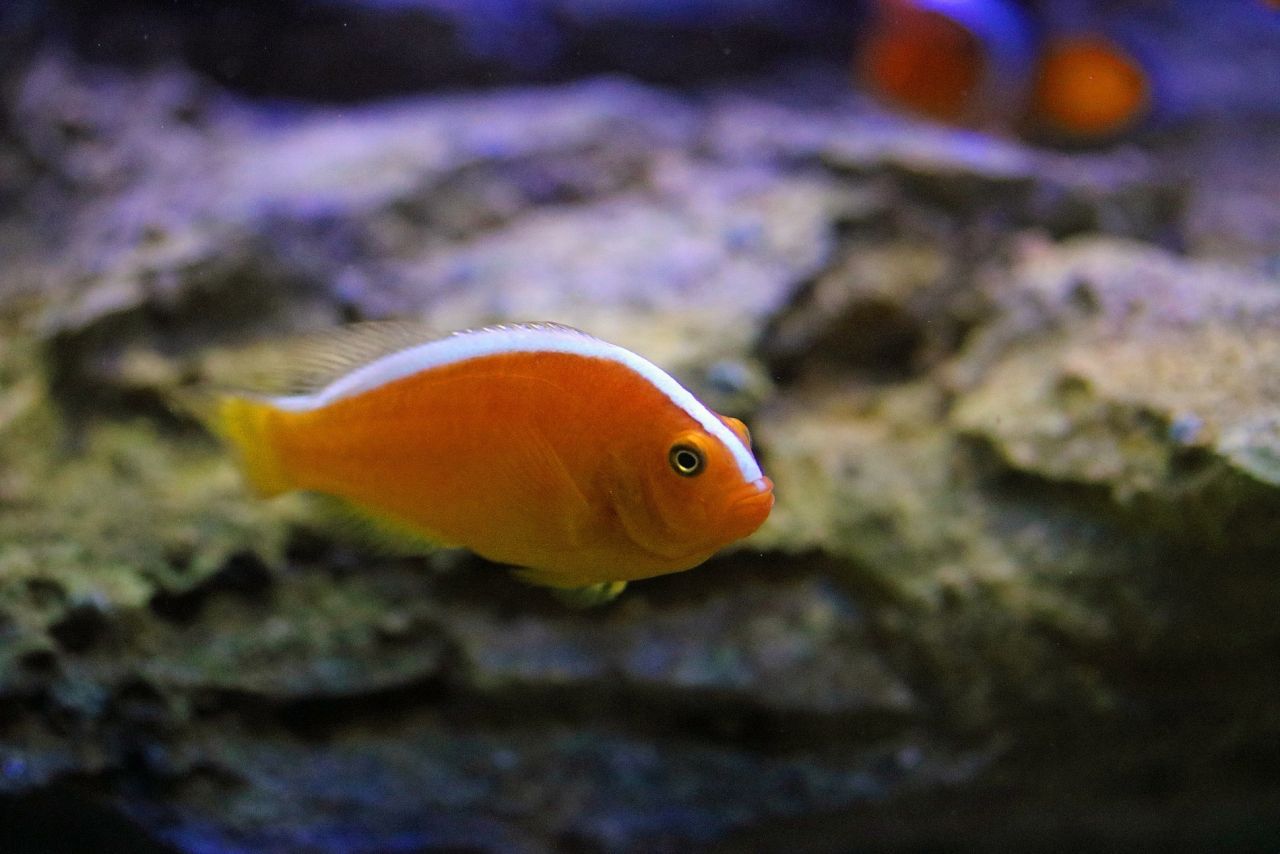Appearance and lifestyle:
Nosestripe clownfish (Amphiprion akallopisos) are a pale pinkish-orange colour with a single white stripe running along their back from snout to tail. They can grow up to 11cm long.
Nosestripe clownfish are protandrous hermaphrodites. All are hatched male, and when occupying an anemone, the largest one will change sexes. If the female is removed or dies, the next largest male with change sex and take her place.
Habitat:
Nosestripe clownfish live in shallow reefs in the Indian Ocean on the East African coast, Java, the Seychelles, and Thailand. They are immune to the sting of large anemones, and they will take shelter among anemone tentacles. Their preferred hosts are the magnificent anemone (Heteractis magnifica) and the Merten's carpet anemone (Stichodactyla mertensii).
They are territorial and will defend their anemone from intruders, be they different species, or nosestripe clownfish from a different group. The female, which is the largest clownfish in the group, takes the lead in this defensive behaviour, responding to intruders by charging them and by making a series of loud noises. Nosestripe clownfish have three sounds in their vocal repertoire: A "pop, "short chirp", and a "long chirp", and they use different combinations of these sounds depending on what species they are trying to ward off or how long the encounter lasts.
Diet:
Nosetripe clownfish are omnivorous; they eat a range of live and frozen mysis and brine shrimp, together with marine algae, nori, spirulina, and algae-based food.
Threats:
Some of the threats faced by nosetripe clownfish are:
- Degradation of coral reefs: This destroys the anemones and coral ecosystems that clownfish depend on for protection and reproduction.
- Global warming: This causes coral bleaching, which may result in the death of sea anemones, which provide the clownfish with shelter and defence.
- Pollution: This negatively affects marine species' health and reef ecosystems.
- Loss of habitat: Directly affects clownfish shelter and breeding grounds by harming reefs and anemone populations.
